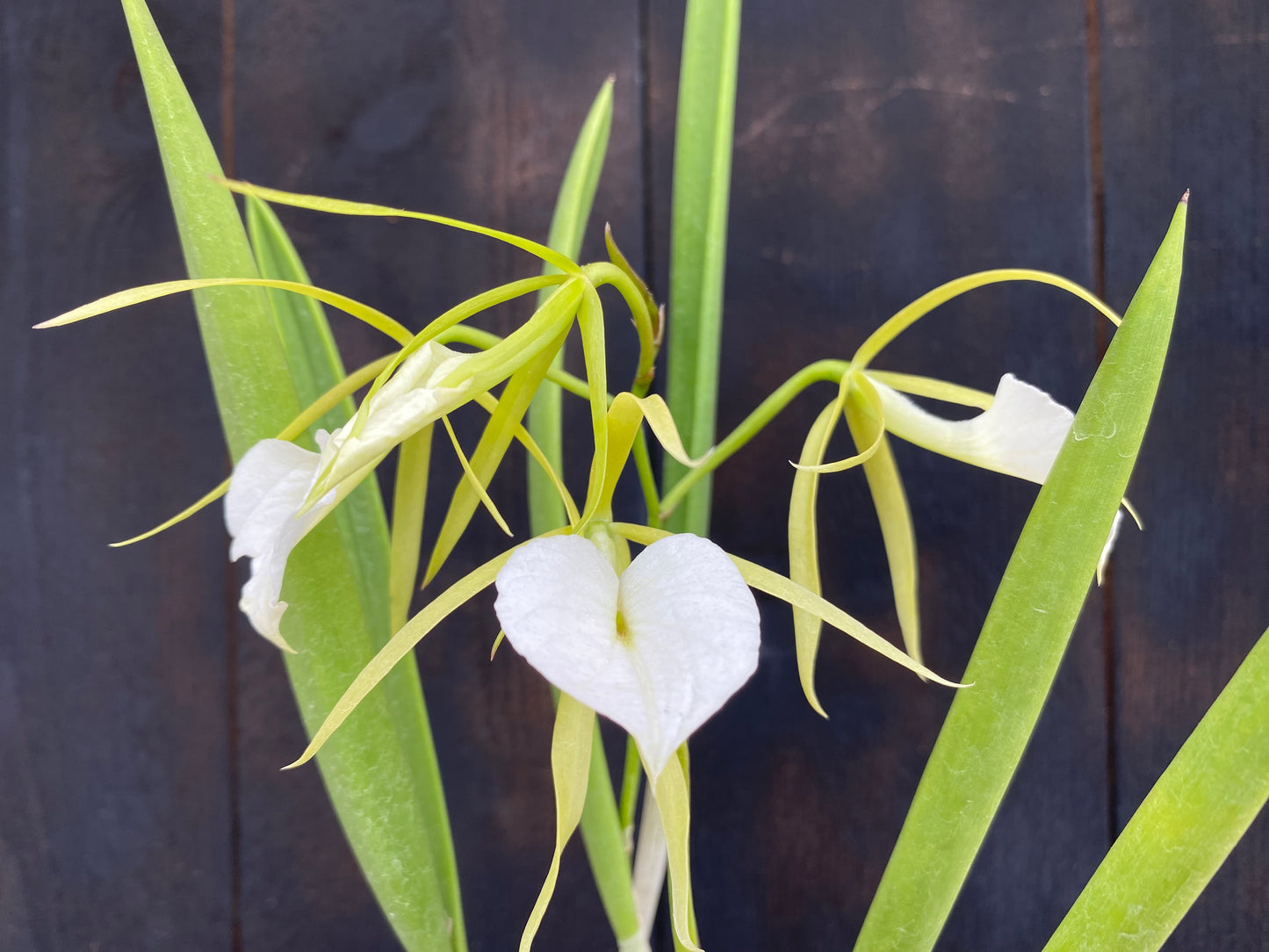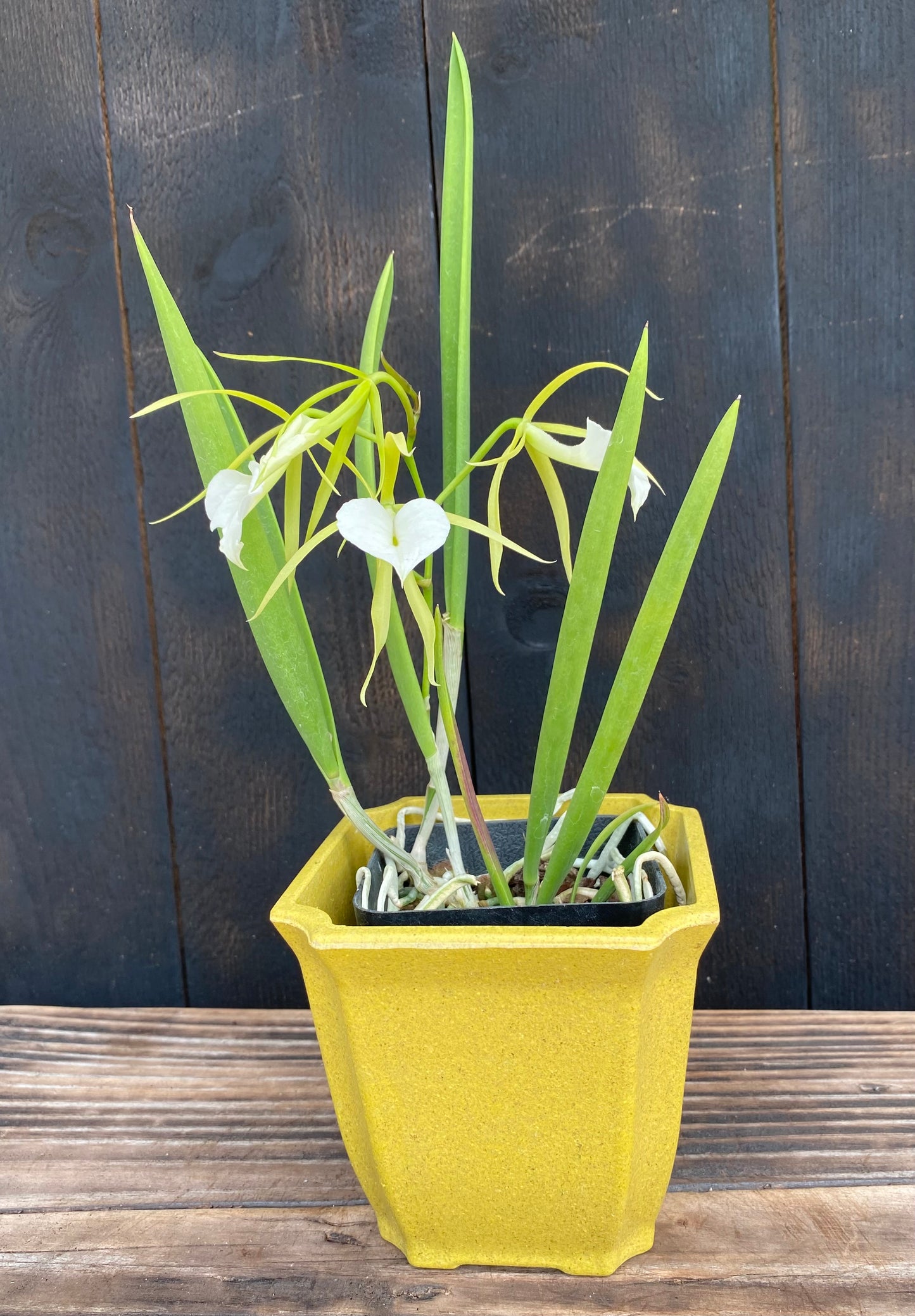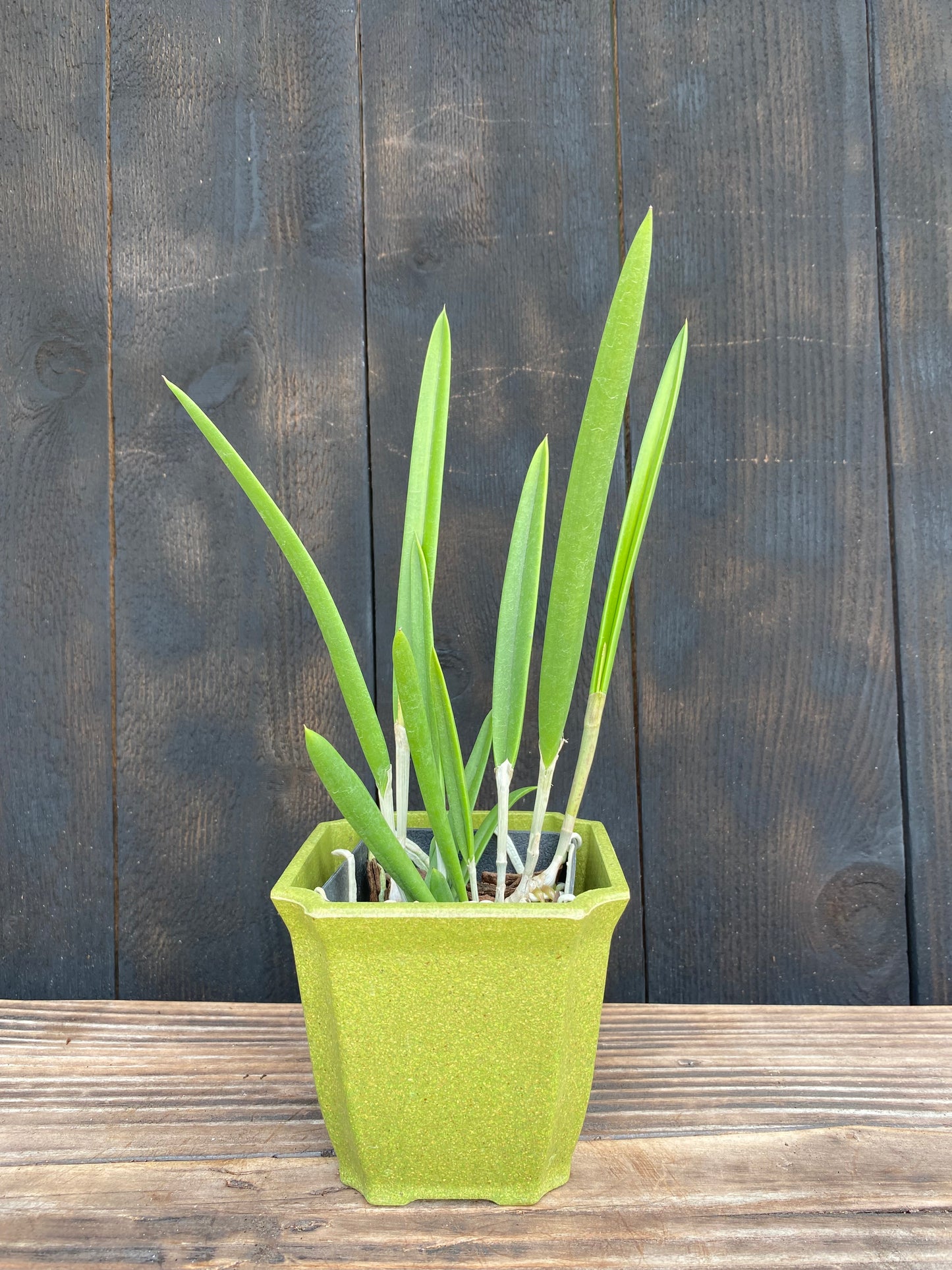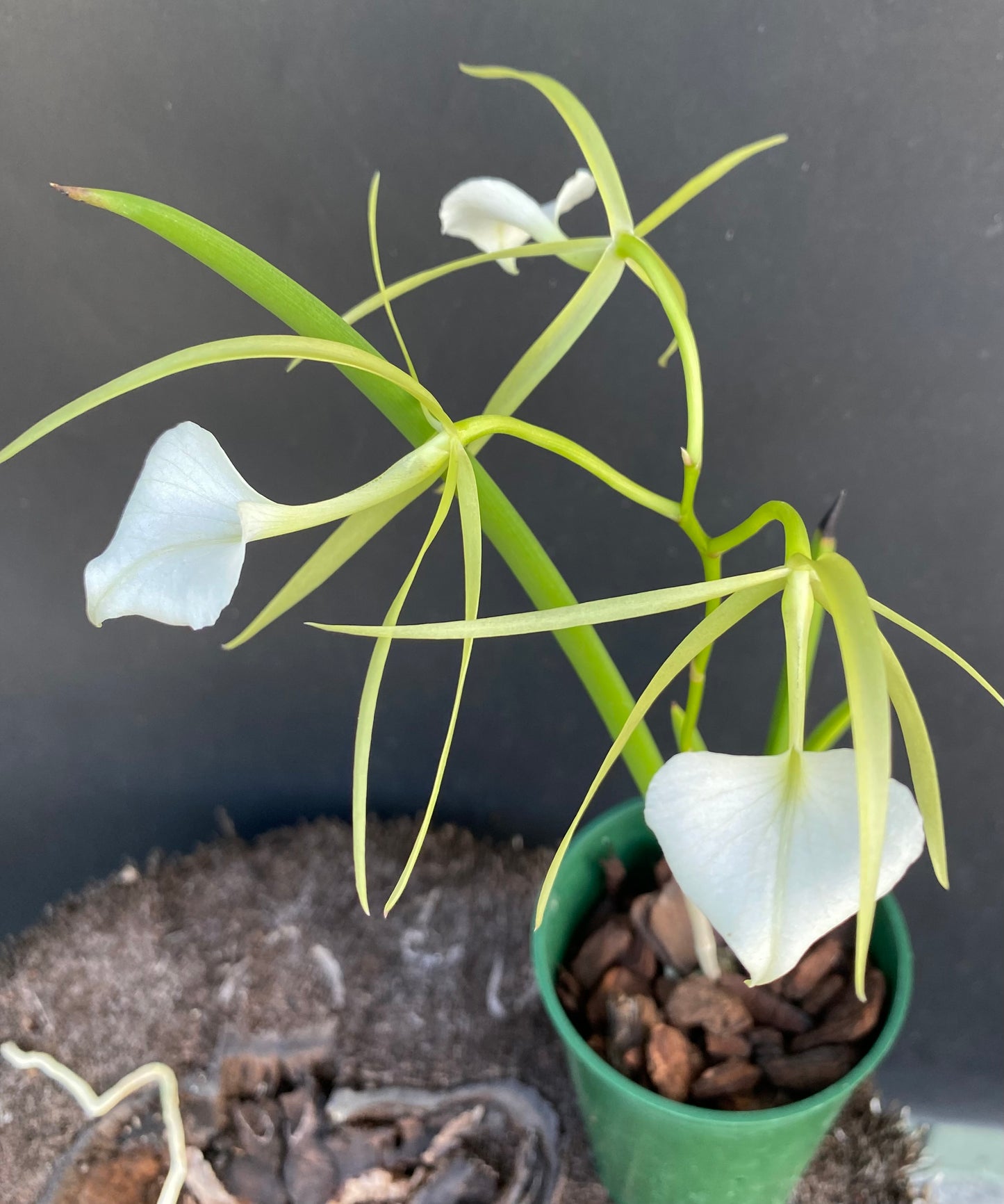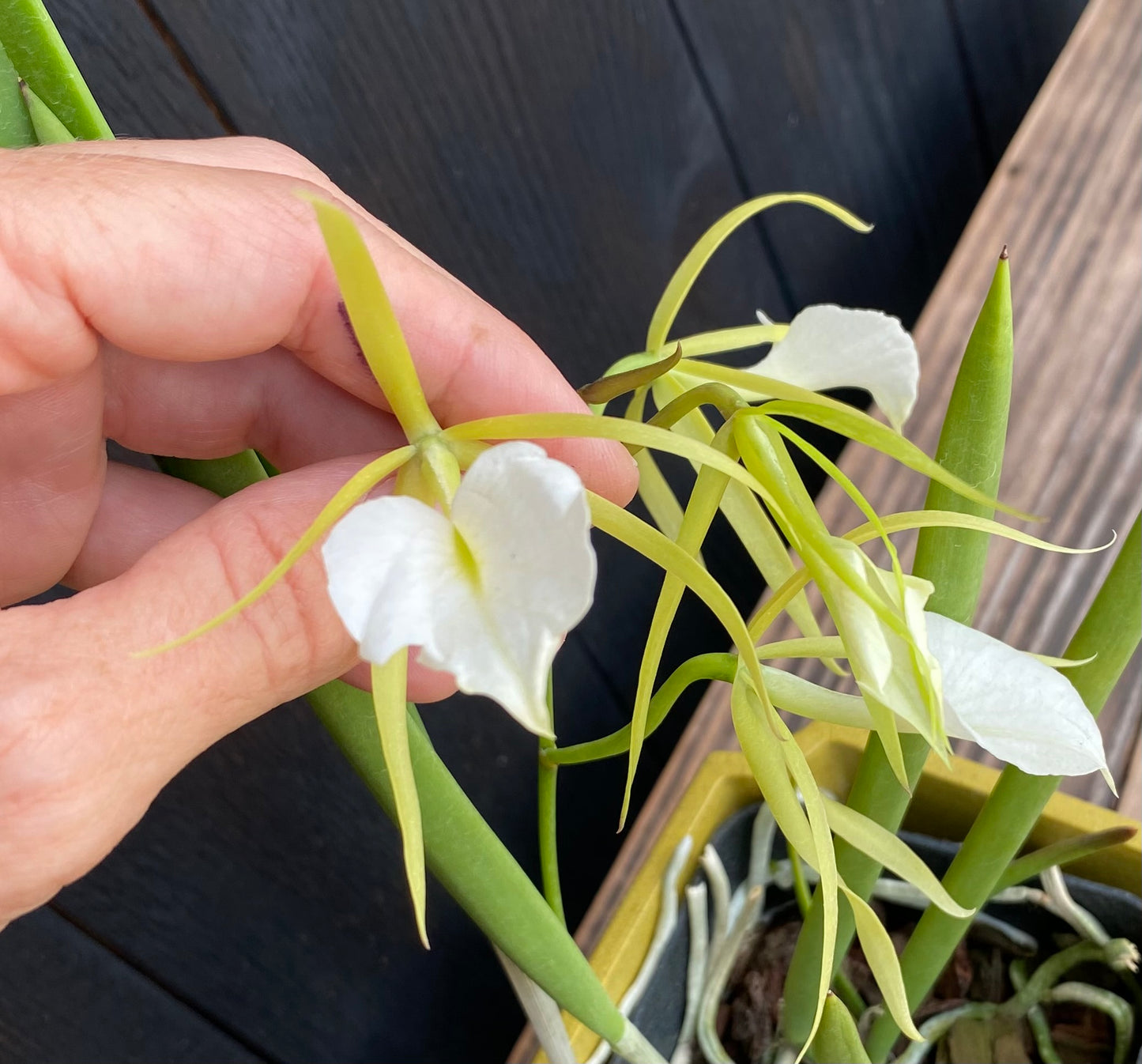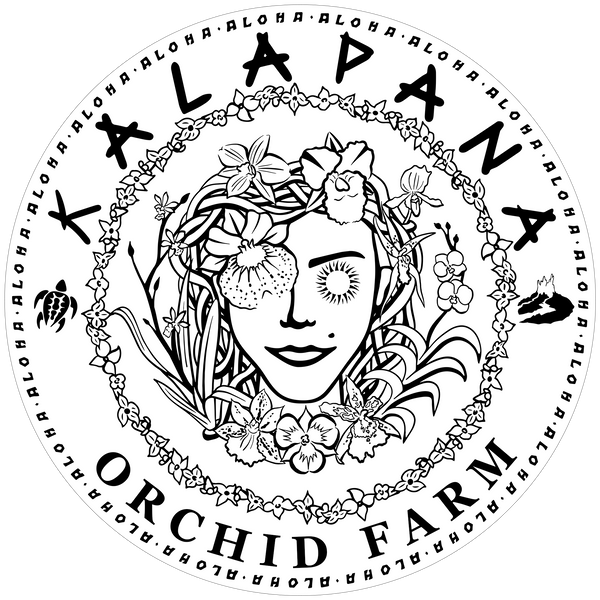Kalapana Orchid Farm
B. Little Stars
B. Little Stars
Couldn't load pickup availability
If the moon had a favorite flower, this would be it. Brassavola 'Little Stars' is famous for its otherworldly blooms and, more importantly, its intoxicating nocturnal perfume. By day, the flowers are elegant, spidery constellations. Long, slender, whip-like sepals and petals of a cool chartreuse-green radiate outwards. Front and center is a large, perfectly heart-shaped lip of the purest, most immaculate white, looking like it was cut from pristine velvet. The whole plant has a unique, architectural look with succulent, pencil-like leaves (botanically known as terete foliage) that are a testament to its hardy nature. But the real magic happens after dusk. As night falls, the flowers release a powerful, sweet, citrus-and-jasmine fragrance that can fill an entire room. It’s the official perfume of the moon.
Quick Start
Light: Bright light, 3,000–5,000 foot-candles (≈30k–50k lux). Loves sun, but shield from harsh midday rays. Temps: Warm. Days 75–90°F (24–32°C); Nights 60–70°F (15–21°C). It loves heat. Water: Drench thoroughly, then allow roots to dry out completely. Very drought-tolerant. Humidity: 50–80%, but requires excellent air circulation. Fertilizer: Weak (¼–½ strength) balanced fertilizer, weekly during active growth. Flush monthly. Media: Must be extremely airy. Best grown mounted on cork/tree fern or in baskets with very little medium.
🌺 Orchid Lore & Discovery
This celebrated orchid is a primary hybrid, registered in 1968 by the legendary Ernest Hetherington. It’s a masterful cross that combines two of the best Brassavola species into something even greater than its parts.
Its first parent is the famous Brassavola nodosa, the "Lady of the Night." Native to the hot, humid coastal lowlands from Mexico to Colombia, B. nodosa is renowned for its large, showy lip and that knockout nocturnal fragrance, which it evolved to attract night-flying moth pollinators.
The other parent is Brassavola cordata (often referred to by its synonym, B. subulifolia). Hailing from Jamaica, this species is known for being incredibly floriferous, often producing a ball of starry flowers. It contributes the profuse blooming habit and refines the star-like shape of the flowers.
The result, 'Little Stars', is a hybrid that is exceptionally tough, heat-tolerant, and a very reliable bloomer, inheriting the best traits from both of its coastal-dwelling parents.
🌿 How to Grow Brassavola 'Little Stars'
Light This is a high-light orchid. Give it as much light as you can without burning the leaves. An east-facing exposure with direct morning sun is great, as is a bright, shaded greenhouse. The pencil-like leaves should be a medium to light green; a reddish or purplish blush indicates high light and is perfectly normal and often encourages more blooms.
Temperature Think warm, tropical beaches. This orchid thrives in heat and is very forgiving of high summer temperatures. Aim for warm days and nights that stay above 60°F. It is not cold-tolerant.
Water The most important rule: let it dry out completely between waterings. The succulent leaves are designed to store water, making the plant very drought-tolerant. The roots despise being constantly wet and will rot quickly without a distinct dry cycle. When you do water, drench it thoroughly. Mounted plants may need watering every day or two in summer, while potted plants may need it once or twice a week.
Humidity It appreciates moderate to high humidity but absolutely requires excellent air movement to mimic the coastal breezes of its parents' habitats. Good air circulation is the key to preventing problems.
Fertilizer During active growth (new leaves and roots), fertilize with a balanced orchid fertilizer at ¼ to ½ strength with every watering. Reduce or eliminate fertilizer during the cooler, darker months. Flush with plain water once a month to prevent salt buildup.
Media This plant wants its roots in the air. Mounting on cork bark, tree fern, or a piece of driftwood is the ideal way to grow it. It can also be grown in slatted wood baskets with little to no media, or in clay pots with an extremely coarse mix of lava rock, charcoal, or large-grade bark chunks. It prefers to be under-potted and root-bound.
Repotting It dislikes having its roots disturbed, so repot only when absolutely necessary (e.g., the mount is rotting or it's completely overgrown its pot). The best time is when you see new roots just beginning to emerge from the base of the plant.
Currently available in 4" pots, in blooming size only (no buds or spikes).
Share
